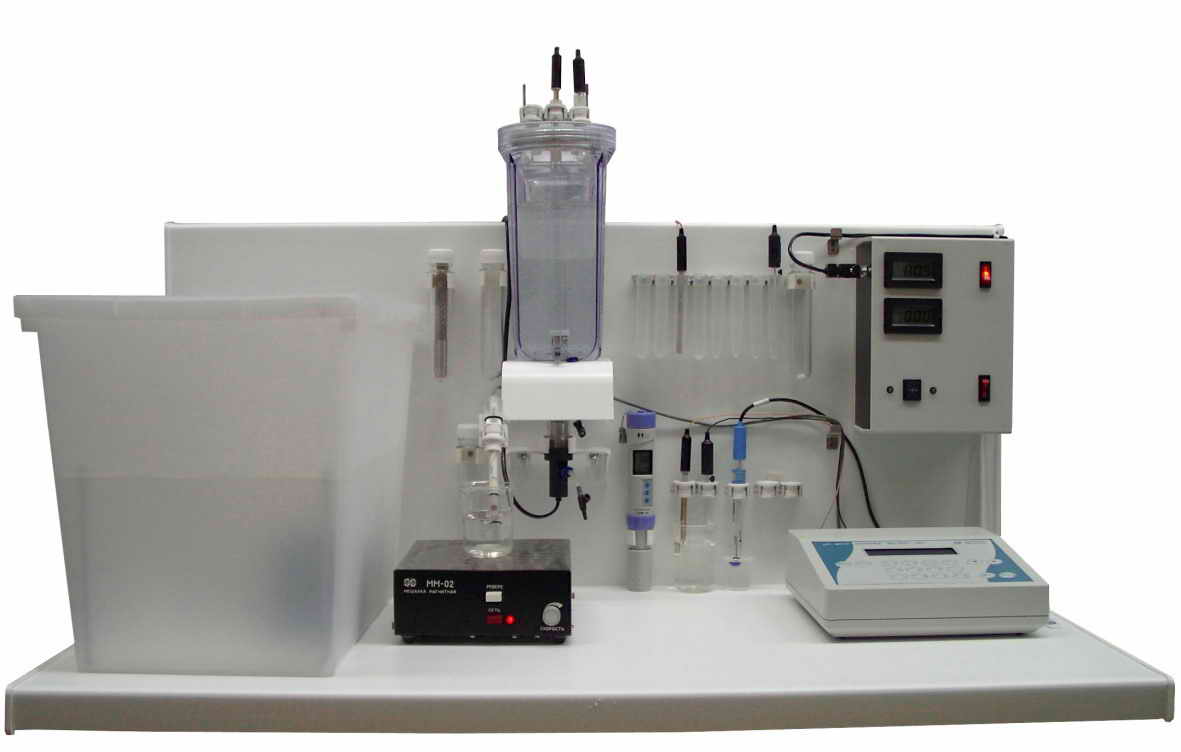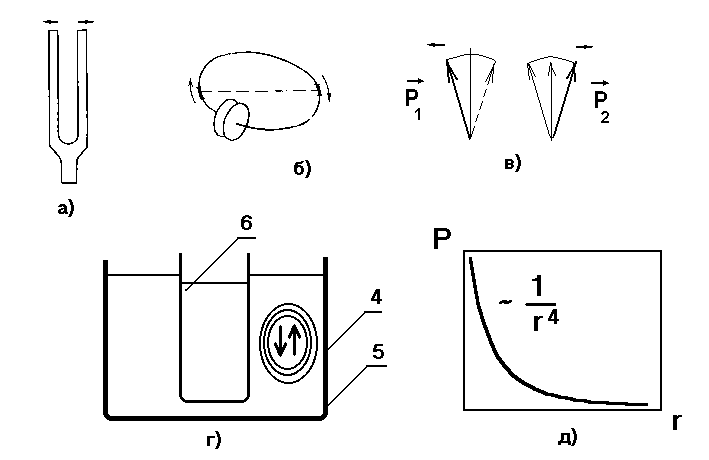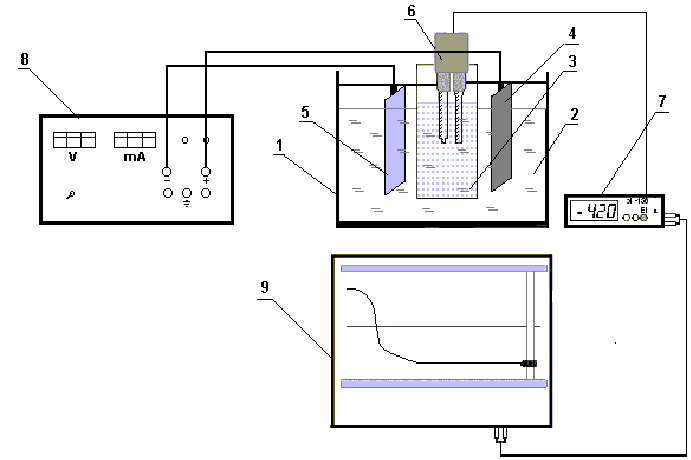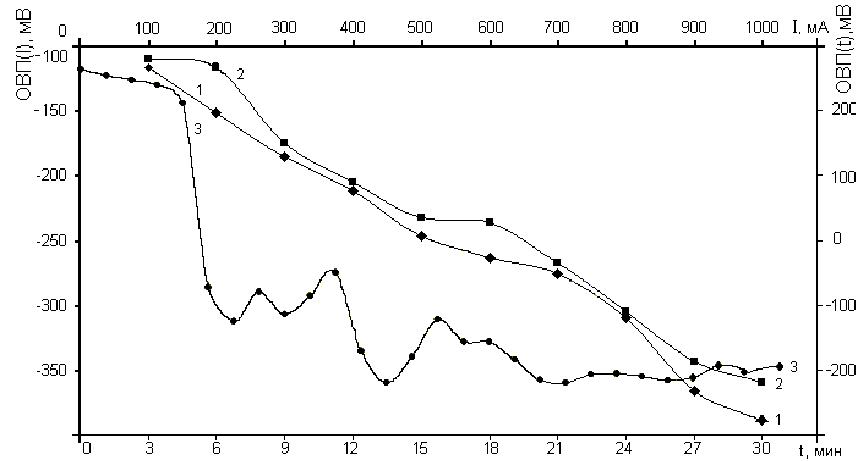|
"IIS-RT"- 2002. Collection № 26-4 |
Appearance model
of non-contact liquid activation
in a non-diaphragm electrolyzer
Selyunina
E.A.,Shironosov V.G.,
Shironosov E.V.
Department of physics, medicine and biology
Udmurt State University, Izhevsk
ikar@udm.ru
Collection of abstracts of VNKSF-8, Yekaterinburg, 2002, p.604-606
| As a rule, electrochemical liquid activation is carried out in a diaphragm of non-diaphragm electrolyzer [1]. During this process liquids directly contact with anode or cathode and pass into a metastable state. as a result, properties and chemical composition of the liquids change, as well as microcluster structure, ORP and hydrogen concentration. The method of non-contact liquids activation is less common. Its basic physics were laid down by Gerlovin I.L. in 1982. He explained the process of electrochemical activation without direct contact with electrodes on the base of fundamental field theory [2]. This theory is based on two propositions:
According to this theory [2], one can understand activation as the process when disturbance of equilibrium between atoms, excited elementary particles of vacuum and bonds (with regard to anisotropy of power interactions) lead to a metastable state, which can be called activated or structural state of an environment. The phenomenon of non-contact liquid activation in a diaphragm electrolyzer was empirically proved by Bakhir in 1982 [1]. The phenomenon of non-contact liquid activation in a non-diaphragm electrolyzer was empirically discovered by Shironosov V.G. and Shironosov E.V. in 1999 [3]. The phenomenon can be explained by resonance [4-5]. The high quality of tune forks is well known (~104). Due to oscillation of the forks in antiphase (Figure 1a), the tune fork becomes a source of weak emission which decreases with time. The same effect is observed in a closed circuit (Figure 1b). Oscillations of electrical and magnetic part of electromagnetic field are observed in an antiphase. Covibrating dipoles in an antiphase which become a source of weak emission form more complex stable resonant structures (Figure 1c). In a static state such dipole systems are unstable (collapse effect), but in a dynamic state they are stabilized [4-5]. Non-contact liquid activation during the process of electrolysis can be interpreted as an empirical evidence of covibrating dipoles generation, that is generation of resonant microclusters in liquids during the process of electrolysis. Covibrating dipoles formed during electrolysis present stable resonant systems of covibrating water dipoles (ions, molecules, and so on). They form near anode and cathode (Figure 1 c, 1 d), so a diaphragm is not necessary for it. On the base of covibrating water dipoles we can explain the process of water activation during electrolysis and water anomalous properties. Variable EMF (electromagnetic fields) formed on the base of two covibrating dipoles has a narrow frequency range (effect of resonance) and decrease proportionally 1/r4, r- distance from covibrating dipoles (Figure 1c, 1d). In this particular case r is the distance between non-contact activated liquid and electrochemically activated liquid, that is r is thickness of the wall between them (Figure 1d). Spectrum maximum is likely to be in high frequencies range, since representative frequencies of rotational transitions of OH- are ~2 GHz (wavelength =~18 cm). Thus non-contact activation can be performed only if the wall is thin enough and not far from covibrating dipoles. Activation also depends on spectral properties of the material the wall is made of. Experimental data shows Q value of such dipole systems: Q ~ 10^13...10^23. Thus if Q value is high non-contact liquid activation effect will get more significant in the course of time, even if electric power of electrochemical activation is not high. Primary covibrating dipoles lead to formation of the secondary covibrating dipoles outside the limits of interelectrode space [5].
A special appearance model was made in the department of biology, medicine and physics, so that students could study the phenomenon of non-contact activation by means of a non-diaphragm electrolyzer (Figure 2). The model consists of a pH and ORP Meter (pH-150), an electrolyzer, a stabilized power supply B5-49, a combination electrical measuring instrument 43101, a two-axis recorder N307.
This appearance model is used during laboratory works on a course "Water and water solutions". Electrolyzer container is made of plexiglass so one can observe the process of liquid activation. The model allows to:

"Izumrud-SI" (mod.04u) - 2008, i-si-04_u.htm The experiments were conducted according to the following protocol. Thin hermetic polyethylene containers for activation (thickness of film ~0.1mm) were filled with a studied liquid (V=50 ml) and placed into an electrolyzer. Anode (with ruthenium oxide coating) and cathode (12N18x9T) are placed parallel to each other in an electrolyzer. Distance between anode and cathode is 53 mm, distance between electrodes and electrolyzer walls is 45 mm. During the experiments an electrolyzer was filled with tap water (v=1.8 l) to with table salt (NaCl) was added in quantity of 9 grams per liter. Then voltage was induced on electrodes and during half an hour we registered non-contact liquid activation ORP dependence on time at constant current by means of a two-axis recorder N307 (Figure 2). The experiment was conducted 5 times at the same current. Finally we found maximum ORP dependence on initial current strength. A series of experiments on non-contact activation of physiological solution (0.9% NaCl) and distilled water was conducted by means of this appearance model. Figure 3 shows ORP dependence on current (l) and time (t) for non-contact liquid activation.
References: | |||||
 Russian
Russian

